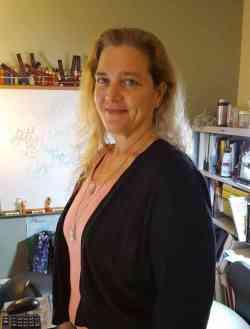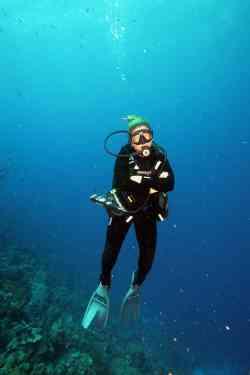Marjorie Allan and the Research Behind Play

Can you describe your role at Children’s Institute and how the work that you do supports the whole child – socially, emotionally, and physically?
I’ve had several roles at Children’s Institute starting way back in the early 1990s when we were still Primary Mental Health Project and housed on Mt. Hope Avenue. Over the years I have been part of study teams investigating the long term efficacy of prevention programs and the impact of a wide range of interventions. I spent about 10 years as a researcher in the Department of Pediatrics at Golisano Children’s Hospital where I broadened my understanding of community health and how it affects children's well-being.
Since returning to Children's Institute in 2006 I've worked on evaluations of interventions addressing children’s nutrition and physical activity in order to promote healthy lifestyles and healthy weight. At first it might seem that a childhood obesity prevention program is outside the mission of Children's Institute, but once the interconnectedness of all aspects of a child's inner health and external influences is considered, it's easy to recognize that healthy weight is an integral component of whole child health.
Whole child health, by definition, encompasses physical, cognitive, and social-emotional development. The work I've contributed to at Children's Institute increases our knowledge about how best to nurture and foster healthy development, whether it's working with schools, families, or other agencies that meet the needs of children.
Tell us a little about the schools that you work with, their initiatives, and the results you are seeing from these initiatives.
Most recently I've been working with eight RCSD elementary schools and one charter school that were awarded funding from the Greater Rochester Health Foundation back in 2013. These schools all serve children who live in areas that struggle with high levels of poverty and face the challenges common to many schools today – trying to elevate low test scores and increase school attendance by stretching the budgets. In many cases recess and other essential components of the school experience were reduced or eliminated entirely.
The funding was targeting childhood obesity prevention, however in doing so schools were creating a healthier school environment overall. Members of the school community including bus drivers, cafeteria staff, and all members of the teaching team were invited to take part in training sessions that would give them new tools and strategies to promote children's physical activity and healthy behaviors. Although it was voluntary, a lot of school staff participated. My role, as part of the evaluation team, allowed us to observe the creative ways the schools incorporated what they were learning into the school day. We saw schools go from no recess to daily physically active and fun recess for all students for at least 20 minutes. In the cafeterias salad bars and healthy flavor stations were added in response to student requests. Cafeteria staff were encouraging the students to make healthier choices by cleverly showcasing fruits and vegetables and making subtle suggestions. We saw a transformation in these schools that started with very small but very strategic changes.
Do you believe that physical play is a necessary part of the social and emotional development of a child? In what ways?

Whether I believe it or not, evidence informs us that physical play is a vital part of children's healthy development, including their social and emotional growth. Besides the benefits to the body, we know that physical activity improves cognition – by the way, this is true in all stages of life. Recess and physical play also give children a chance interact with each other in a far less structured way than in the classroom but still in a safe environment where there are rules in place. There are many excellent papers and texts that describe the benefits of play for children, so I could go on indefinitely, but what we were able to observe in our program schools spoke volumes. Classroom behavior and student attention both improve when recess is part of the school day.
How do you personally incorporate “physical play” into your lifestyle? What are the benefits that you receive from this play?
Anyone who visits my office can see several examples. I have a "standing desk" that I can raise and lower, allowing me to stand (or dance) while I work. When I do sit, I'm sitting on a ball-chair to help improve my balance and core. I also have a couple of yoga mats in my office. Yoga is my "go to" activity. I take advantage of a yoga class offered by the University at the MAG on Wednesdays whenever I can. Otherwise I try to incorporate yoga into my life on a daily basis for the physical, mental, and overall wellness benefits. I also have 2 labs who take me for a couple of brisk walks every day. All of those, however, can't compare to my most loved physical play which is scuba diving in remote tropical waters every chance I get. I've found that spending time with sharks puts other things in my life in a whole new perspective.
